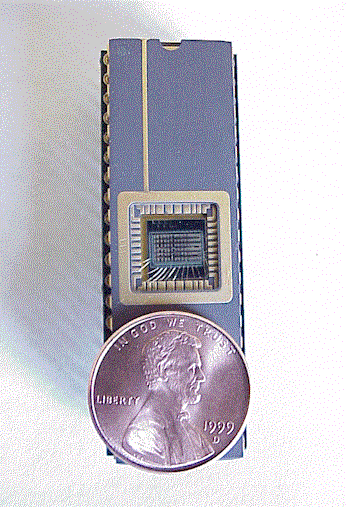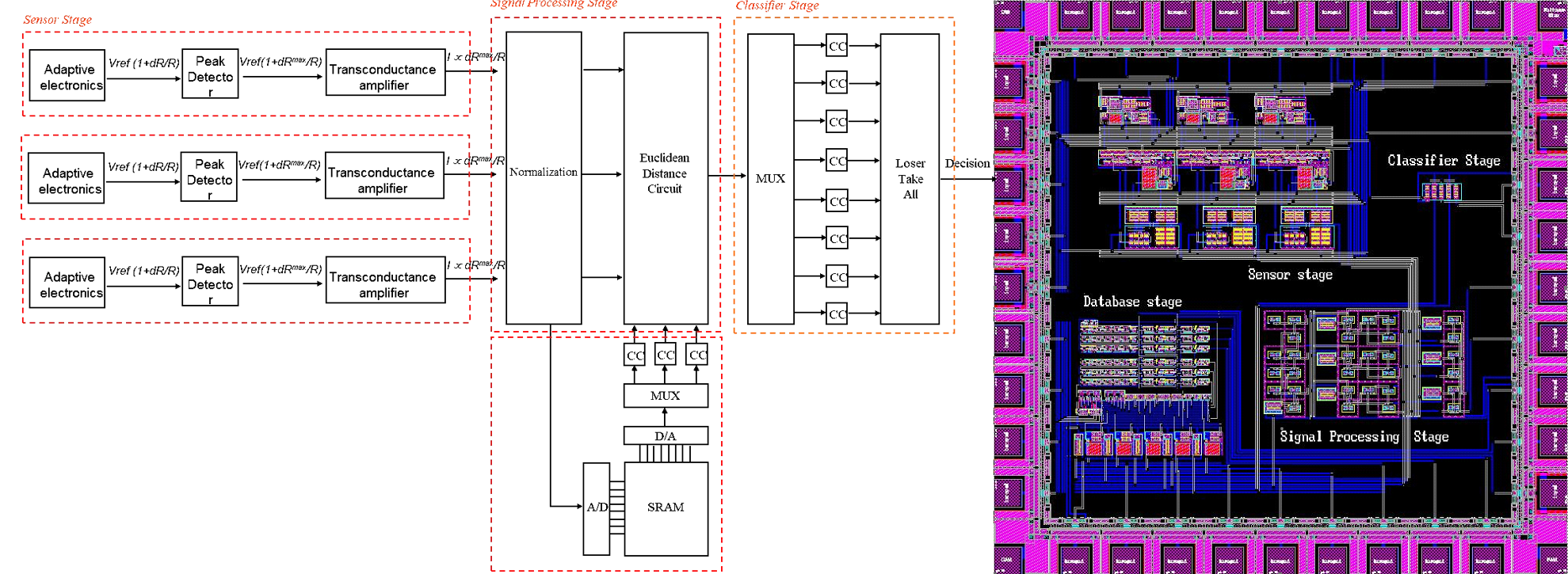Overview
This research area focused on VLSI systems that emulate neural processing in biological systems, such as vision, sound, speech, touch, and chemical sensing.
Pioneers
The Neuromorphic approach was pioneered by John Hopfield and Carver Mead at Caltech, leading to the formation of the Multi-Disciplinary Computation and Neural Systems (CNS) degree program, and the Caltech NSF Engineering Research Center (ERC) for Neuromorphic Systems Engineering. Dr Goodman was the founding PI and Director of the Center for Neuromorphic Systems Engineering (CNSE) at Caltech.
VLSI Projects
- • Caltech Electronic Nose.
- • Caltech Silicon Active Skin.
- • On-chip Neural Network Learning
- • High-capacity Neural Associative Memories
- • Real-time vector quantization on images
- • Video Contrast Enhancement
- • Color Constancy
- • Stereopsis
Caltech Electronic Nose.

Odor Sensor Chip
Taking inspiration from the mammalian olfactory system, and utilizing doped conducting polymer sensors pioneered by chemistry Professors Bob Grubbs (Nobel Laureate) and Nate Lewis at Caltech, my research group developed several chips which integrated odor sensing and electronic processing on CMOS silicon chips.

Hybrid Analog/Digital complete nose-on-a-chip processor.

- • Sensor stage: baseline adapt, ΔR/Rb.
- • Signal processing stage: normalize , compute Euclidean distance.
- • Database stage: pattern training and recall
- • Classifier stage: Euclidean distance neural network.
Cyrano Sciences
The Caltech Electronic Nose technology was spun-off into a startup company “Cyrano Sciences”, which was later aquired by Smiths Detection, a global leader in detection technologies to make the world a safer place. https://www.smithsdetection.com/
Caltech Silicon Active Skin
Taking inspiration from the ability of the shark’s skin to actively reduce drag, and in collaboration with Professor Yu-Chong Tai’s MEMS research group at Caltech, and Professor C-M Ho at UCLA my research group developed the Caltech Silicon Active Skin: Combining sensing, processing, and actuation on an integrated CMOS/MEMS system chip, ultimately aimed at reducing micro turbulence, and hence drag, on an aircraft wing.
